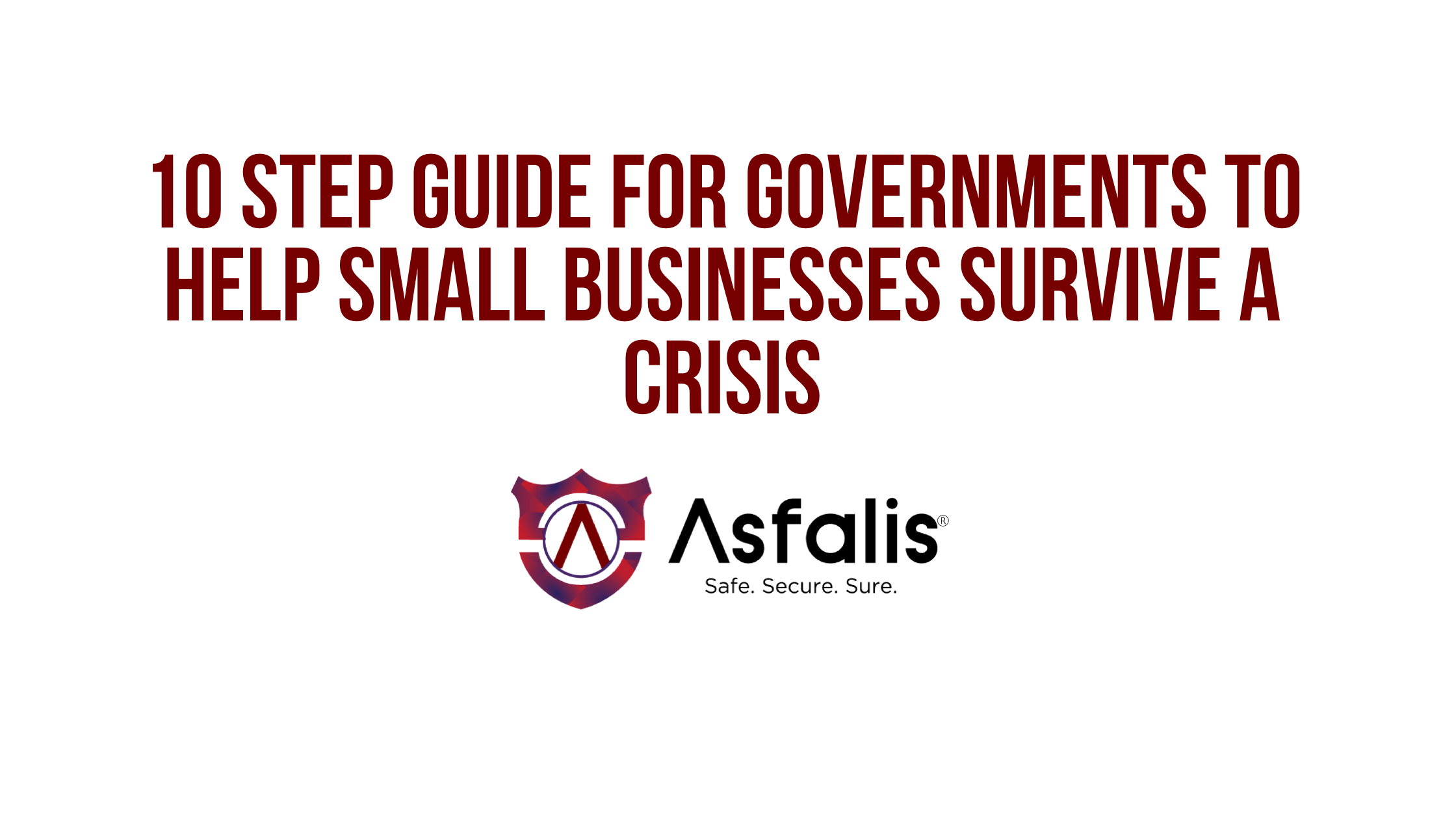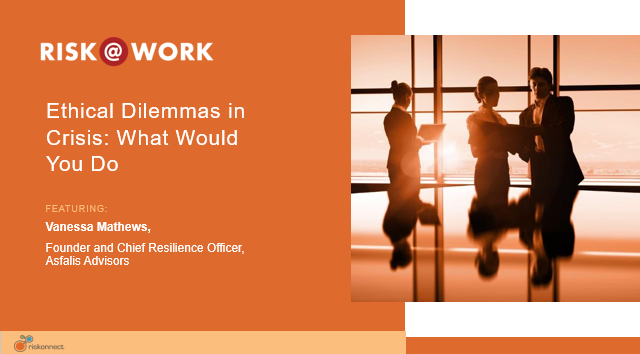Originally published on the International Association of Emergency Managers November 2021 bulletin. Written by Vanessa Mathews, CEO of Asfalis Advisors.
The post-pandemic world presents four main types of risk to businesses eager to capitalize on pent-up consumer demand, but determined to protect their stakeholders and ensure their businesses remain resilient. In this article, I’m going to lay out what those risks are and explain what thoughtful emergency managers can do to help their organizations reap the rewards but avoid the pitfalls.
Recently, I and other members of my team at Asfalis Advisors participated in a discussion with our friends at M Booth, the New York communications agency, about the risk environment for business in the post-pandemic world. Based on our collective experience and the conversations we’ve been having with our clients, we identified four main types of risk that businesses are facing now and will continue to face in the coming months. Because each of these risks has movement and direction, they can be described as vectors. The four vectors of risk are top-down, bot tom-up, inside-out, and outside-in.
Let’s look at each type of risk and also consider ways that emergency managers can help their organizations manage and reduce it, increasing resilience and protecting their stakeholders.
Top-down Risks
This type of risk is mostly about succession planning and knowledge transfer. The pandemic resulted in the departure of many executives and other leaders, and more departures might be coming. The actions of those at the top have caused challenges for people in the entry level and middle management layers. When senior leaders exit, they often take their knowledge and skills with them, without passing on what they know to those staying behind. The wholesale loss of such knowledge would be a damaging blow for any organization. This is especially true now, when the business environment is so uncertain.
What emergency managers can do to help:
- Advocate for frank discussions about succession planning and knowledge transfer.
- Do what you can to prevent precious institutional knowledge from walking out the door.
- Quantify the risks and possible costs to the organization of the loss of this information as a way of getting others to take the issue seriously.
Bottom-up Risks
Many companies are scrambling to bring on workers to ramp their operations back up. This poses numerous risks as hiring standards are relaxed, background checks become more cursory, and training gets rushed. In addition, many workers have expressed reluctance about coming back to work full time on-site. (The recent legalization of marijuana in many local jurisdictions is throwing another curve ball at already overstressed HR departments.) These developments present risks to organizations’ ability to staff their operations and maintain their quality standards.
What emergency managers can do to help:
- Talk about these issues with the HR team from a risk management perspective.
- Think through the likely impacts of relaxing hiring standards and partner with HR to develop plans for dealing with them.
- Help the organization understand the potential risks the company is running if it is rigid in insisting that employees come back to work full-time onsite, or the impacts of cutting corners in the recruitment and hiring processes.
Inside-out Risks
Today’s employees want more than a paycheck. They expect flexibility, empathy, and some sense of compensation equity. This goes beyond the pandemic to encompass issues such as race, gender, gender-identity, and the environment. In this type of risk, people situated deep within the company can cause impacts that ripple out. Many younger employees are pressuring their organizations to stand up for certain causes that may or may not be related to the company’s line of business. Organizations that do not address these concerns run the risk of alienating or driving away parts of their workforce, with all the consequent impacts to their ability to carry out their core mission.
What emergency managers can do to help:
- Be objective. This isn’t about the emergency manager’s personal views. It’s about understanding the risks posed to the business by organizational policies and actions, and making sure senior management is made aware of them.
- The emergency manager of today has to understand the work force in order to help the company approach the risk in the best manner and enable leaders to make informed decisions.
Outside-in Risks
Businesses cannot assume that society’s existing structures have remained steady. The pandemic has strained the public health, aviation, hospitality, government, and food sectors, among others. Cyberattacks are intensifying and organizations from small business to corporations are facing labor shortages and high turnover. With outside-in risks, events external to the company threaten its operations and stability.
What emergency managers can do to help:
- Look at the big picture. Remember that the organization doesn’t exist in a vacuum.
- Help senior leaders become aware of these outside-in risks.
- Recognize that the organization is part of a community and depends on it for its own prosperity and stability.
- Help manage down risks by encouraging the organization to take measures to strengthen the broader community.
The shift toward a post-pandemic world will bring welcome relief but also new challenges. These can be divided into four types—top-down, bottom-up, outside-in, and inside-out.
To help their organizations manage these four types of risks, emergency management professionals will have to take a broad view of their role. They will need to be objective in assessing the risks posed to the organization by attitudes and behaviors they might not personally agree with and be generous in supporting their communities. By taking these steps, emergency managers can be of great value to their organizations in helping them manage the four vectors of risk and navigate the uncertainties of the post-pandemic world.





